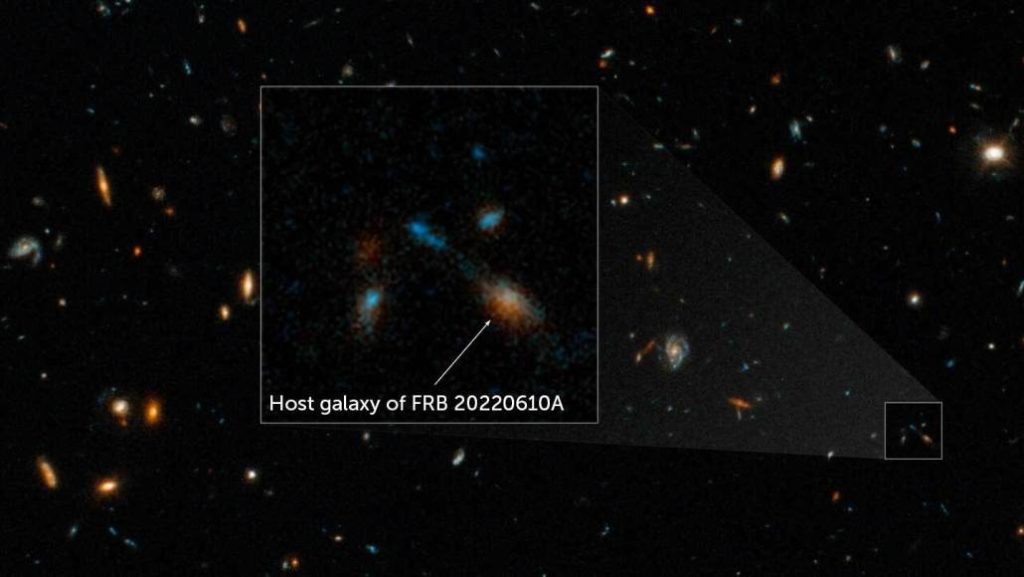Galactic Mergers: Clusters of Galaxies May Birth Magnetars Behind Fast Radio Bursts

Credit: NASA
In a groundbreaking discovery, a remarkably intense burst of electromagnetic energy has been successfully traced back to a cluster of seven merging galaxies, marking the first identification of the source. This finding holds significant implications for the hypothesis that attributes these enigmatic bursts, known as fast radio bursts (FRBs), to peculiar and highly magnetized remnants of dead stars called magnetars.
Fast radio bursts, characterized by their brief yet energetically potent nature, releasing as much energy in a fraction of a second as the sun does in a month, have perplexed scientists since their initial detection in 2007. The identification of a specific galactic origin, particularly from a merging galaxy cluster, contributes valuable insights into the elusive nature of these cosmic phenomena.
Astronomer Alexa Gordon from Northwestern University presented insights on the elusive nature of fast radio bursts (FRBs) during a news conference at the American Astronomical Society’s annual meeting.
The prevailing hypothesis suggests that these high-energy bursts may be generated by compact objects like magnetars, a notion supported by a prior observation of a magnetar in our galaxy producing an FRB. To delve deeper into FRB 20220610A, identified as the most powerful and distant FRB to date, Gordon and her team utilized NASA’s Hubble Space Telescope.
The surprising revelation emerged as they uncovered a cluster of seven galaxies situated 11 billion light-years away from Earth, all confined within a region comparable in size to the Milky Way. The unexpected nature of this discovery challenges previous expectations, as the team had anticipated a more conventional monolithic spiral galaxy.
The tumultuous surroundings within clusters of merging galaxies facilitate the exchange of gas, dust, and various materials, initiating the creation of new stars. In the event of a substantial star emerging amidst these chaotic conditions, its demise could result in the formation of a magnetar, offering a plausible explanation for the occurrence of fast radio bursts (FRBs).
The researchers aim to leverage the capabilities of the James Webb Space Telescope to conduct an in-depth exploration of the seven-galaxy system. This meticulous examination aims to uncover potential evidence supporting the presence of a magnetar and further elucidate the origins and mechanisms behind the intriguing phenomena of fast radio bursts.


